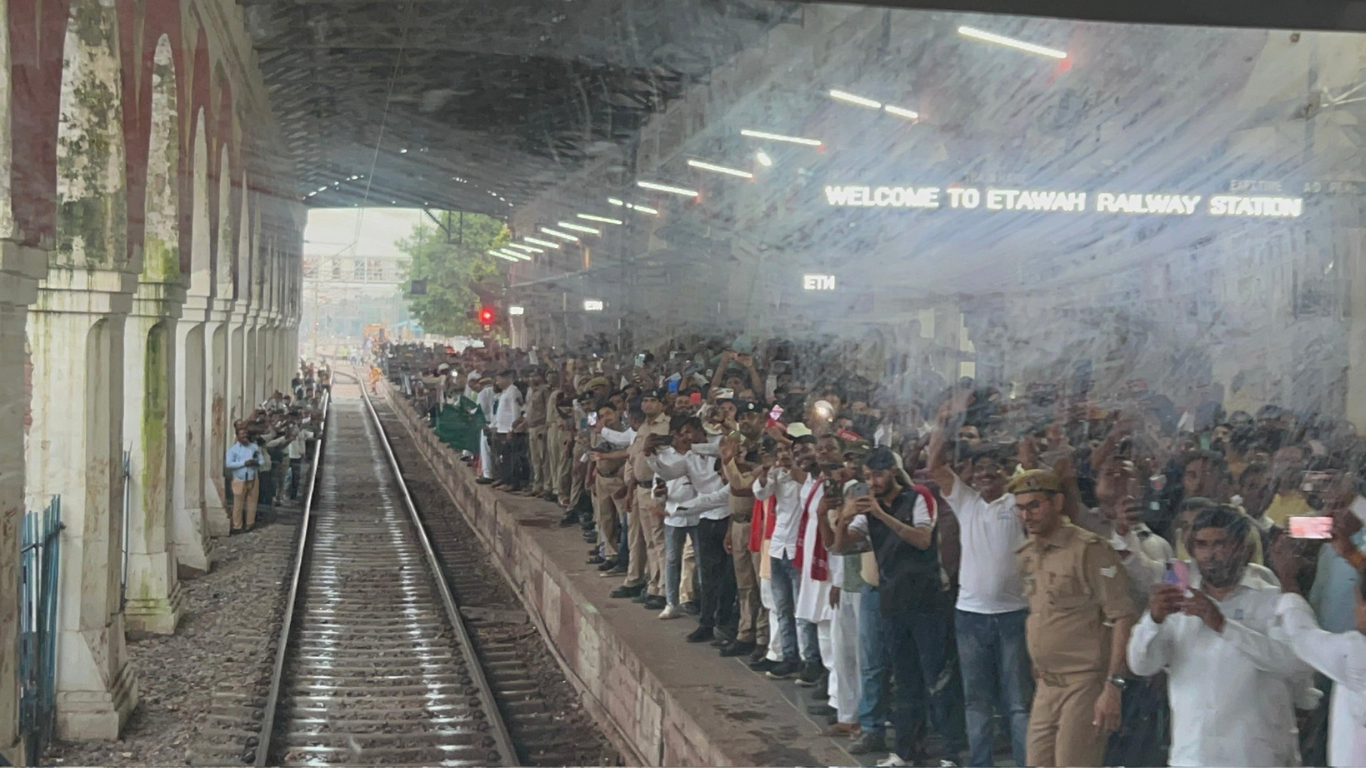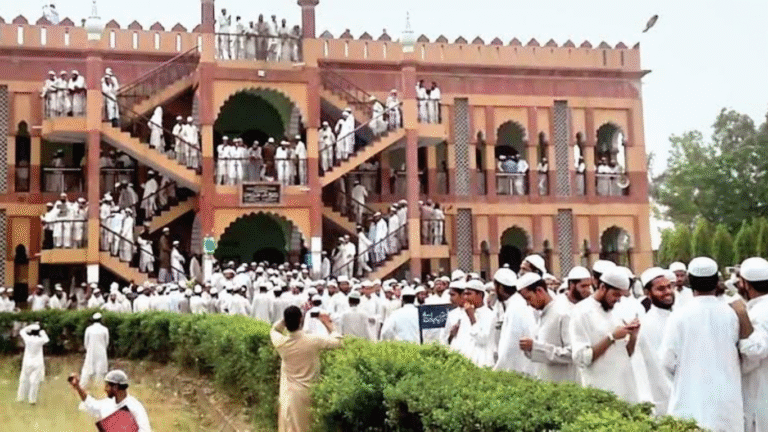
Etawah Railway Station, also known as Etawah Junction, plays a key role in the transportation network of Uttar Pradesh. Located in the heart of Etawah city, this railway station connects people not only to the big cities of India but also to nearby towns and villages. Whether it’s students heading to universities, farmers taking their produce to bigger markets, or families traveling during festivals—Etawah station sees thousands of people every day. The station is not just a place where trains arrive and depart, it’s a space filled with stories, movement, and daily life.
Etawah Junction lies on the important Delhi–Howrah rail route, which is one of the busiest and most significant lines in the country. This makes it a prime stop for many long-distance trains. The station has five platforms, well-maintained waiting halls, food stalls, book stalls, and digital displays for train timings. Over the years, it has been upgraded with escalators, lifts, and better lighting. Security has also been strengthened with CCTV cameras and regular patrolling by the Government Railway Police (GRP).
The station is clean and organized, and the announcements are clear, helping travelers find their trains easily. For people of Etawah and nearby areas, the railway station is nothing less than a lifeline. It links them to opportunities, education, and connections that lie far beyond the city.
History and Growth of Etawah Junction
Etawah Junction has a long and interesting history. The British introduced the railway system in India in the mid-19th century, and Etawah became a part of that railway network due to its location. The station started functioning in the 1860s when the East Indian Railway Company extended its tracks in this region. The aim was to improve the movement of goods like grain, indigo, and cotton from this fertile part of the Gangetic plains.
Over time, Etawah station gained importance as a junction where multiple routes met. New lines were built, connecting it to Kanpur, Tundla, Agra, and later to Bhind and Gwalior. As train services increased, so did the station’s infrastructure. From steam engines to electrified trains, Etawah station has seen it all. It evolved with the times and became one of the most dependable stations in the region.
Today, Etawah Junction is a busy railway point under the North Central Railway zone. It handles several express trains and superfast trains, including those connecting Delhi, Kolkata, Mumbai, Lucknow, and Varanasi. With increasing passenger traffic, new facilities have been added and more are being planned. The station has witnessed the transformation of Etawah from a simple town to a fast-growing city.
Geography and Accessibility of Etawah Station
Etawah is located in the southwestern part of Uttar Pradesh and sits on the banks of the Yamuna River. The land around it is mostly flat and fertile, making it ideal for agriculture. The city also lies close to the Chambal River and its rugged ravines, giving it a mix of plain and rough terrain. This unique geography has shaped the city’s development and influenced its railway connections as well.
Etawah Railway Station is placed in a well-connected part of the city. It is easy to reach from all corners—be it by auto-rickshaws, buses, or private vehicles. The Agra-Lucknow Expressway and National Highway 19 also run close to the city, which makes it easier for travelers to switch between rail and road transport. There’s also a taxi stand and bus stop near the station, helping passengers complete their journey smoothly.
Being located at a midpoint between cities like Kanpur and Tundla, Etawah acts as a convenient stop for trains and passengers alike. The easy accessibility of the station makes it a central travel hub for residents of nearby towns such as Bharthana, Saifai, Auraiya, and Mainpuri. Whether someone is traveling for work, education, medical needs, or social events, Etawah station often becomes the starting point.
People, Culture, and the Daily Life at the Station
The atmosphere at Etawah station is always lively. In the early morning, you’ll find students with backpacks, professionals in formal clothes, and families with luggage waiting for their trains. Vendors serve tea in kulhads, snacks like samosas and poha, and newspapers in Hindi and English. People strike up conversations with fellow passengers, and the buzz is constant.
Etawah has a population that reflects both urban and rural characteristics. People here are rooted in their traditions but are also open to change. Around the station, local dialects like Braj and Kannauji can be heard along with Hindi. The festivals of Holi, Diwali, and Eid are times when the station becomes crowded with families visiting their native places.
Travelers from small towns nearby rely heavily on Etawah station. They travel here for better healthcare, shopping, and education. The station is like a connecting bridge between the old and the new, between villages and cities. It is not just a transit point; it’s where many journeys—emotional and physical—begin or end.
Development and Future of Etawah Junction
In recent years, the Indian Railways has taken several steps to improve Etawah Junction. New ticket counters, better lighting, and additional seating arrangements have been introduced. Special attention is being given to cleanliness and passenger comfort. Wi-Fi service has been made available, and battery-operated vehicles for elderly and differently-abled passengers have also been launched.
There are talks about starting new train services from Etawah to major cities like Jaipur and Bhopal. If approved, these will offer better options for travel and reduce dependency on bigger junctions like Kanpur or Tundla. The local administration and public representatives are also demanding a stop for Vande Bharat Express at Etawah, considering the city’s growing population and passenger demand.
The station’s cargo handling facilities are also being improved. This will help in transporting goods like potatoes, grains, and dairy products, which are major agricultural outputs of this region. The development of Etawah Safari Park and nearby tourist attractions has also led to a rise in tourist movement, and the station is gearing up to meet this growing demand.
Etawah Railway Station, once a small colonial outpost, is now a bustling center of movement and progress. Its journey mirrors the journey of Etawah itself—a blend of tradition, development, and constant motion.



